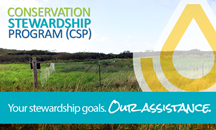|
This is likely no surprise to you, but drought persists across the Caribbean Area and is intensifying in some areas. No geographic area is immune to the potential of drought at any given time. The U.S. Drought Monitor provides a weekly drought assessment, and it plays an important role in USDA programs that help farmers and ranchers recover from drought.
Fact #1 - Numerous agencies use the Drought Monitor to inform drought-related decisions.
The map identifies areas of drought and labels them by intensity on a weekly basis. It categorizes the entire country as being in one of six levels of drought. The first two, None and Abnormally Dry (D0), are not considered to be drought. The next four describe increasing levels of drought: Moderate (D1), Severe (D2), Extreme (D3) and Exceptional (D4).
While many entities consult the Drought Monitor for drought information, drought declarations are made by federal, state and local agencies that may or may not use the Drought Monitor to inform their decisions. Some of the ways USDA uses it to determine a producer’s eligibility for certain drought assistance programs, like the Livestock Forage Disaster Program and Emergency Haying or Grazing on Conservation Reserve Program acres and to “fast-track” Secretarial drought disaster designations.
Fact #2 - U.S. Drought Monitor is made with more than precipitation data.
When you think about drought, you probably think about water, or the lack of it. Precipitation plays a major role in the creation of the Drought Monitor, but the map’s author considers numerous indicators, including drought impacts and local insight from over 450 expert observers around the country. Authors use several dozen indicators to assess drought, including precipitation, streamflow, reservoir levels, temperature and evaporative demand, soil moisture and vegetation health. Because the drought monitor depicts both short and long‐term drought conditions, the authors must look at data for multiple timeframes. The final map produced each week represents a summary of the story being told by all the pieces of data. To help tell that story, authors don’t just look at data. They converse over the course of the map-making week with experts across the country and draw information about drought impacts from media reports and private citizens
Fact #3 - A real person, using real data, updates the map.
Each week’s map author, not a computer, processes and analyzes data to update the drought monitor. The map authors are trained climatologists or meteorologists from the National Drought Mitigation Center at the University of Nebraska-Lincoln (the academic partner and website host of the Drought Monitor), the National Oceanic and Atmospheric Administration and USDA. The author’s job is to do what a computer can’t – use their expertise to reconcile the sometimes-conflicting stories told by each stream of data into a single assessment.
Fact #4 - The Drought Monitor provides a current snapshot, not a forecast.
The Drought Monitor is a “snapshot” of conditions observed during the most recent week and builds off the previous week’s map. The map is released on Thursdays and depicts conditions based on data for the week that ended the preceding Tuesday. Rain that falls on the Wednesday just before the USDM’s release won’t be reflected until the next map is published. This provides a consistent, week‐to‐week product and gives the author a window to assess the data and come up with a final map.
Fact #5 – Your input can be part of the drought-monitoring process.
State climatologists and other trained observers in the drought monitoring network relay on-the-ground information from numerous sources to the US Drought monitor author each week. That can include information that you contribute.
The Drought Monitor serves as a trigger for multiple forms of federal disaster relief for agricultural producers, and sometimes producers contact the author to suggest that drought conditions in their area are worse than what the latest drought monitor shows. When the author gets a call like that, it prompts them to look closely at all available data for that area, to see whether measurements of precipitation, temperature, soil moisture and other indicators corroborate producer-submitted reports. This is the process that authors follow whether they receive one report or one hundred reports, although reports from more points may help state officials and others know where to look for impacts.
There are multiple ways to contribute your observations:
-
Talk to your state climatologist - Find the current list at the American Association of State Climatologists website.
-
Email - Emails sent to droughtmonitor@unl.edu inform the USDM authors.
-
Become a CoCoRaHS observer - Submit drought reports along with daily precipitation observations to the Community Collaborative Rain, Hail & Snow Network.
-
Submit Condition Monitoring Observer Reports (CMOR) - go.unl.edu/CMOR.
For more information, read our Ask the Expert blog with a NDMC climatologist or visit farmers.gov/protection-recovery.
^ back to top
Farmers and ranchers can use the Farm Loan Discovery Tool on farmers.gov to find information on USDA farm loans that may best fit their operations.
USDA’s Farm Service Agency (FSA) offers a variety of loan options to help farmers finance their operations. From buying land to financing the purchase of equipment, FSA loans can help.
USDA conducted field research in eight states, gathering input from farmers and FSA farm loan staff to better understand their needs and challenges.
How the Tool Works
Farmers who are looking for financing options to operate a farm or buy land can answer a few simple questions about what they are looking to fund and how much money they need to borrow. After submitting their answers, farmers will receive information on farm loans that best fit their specific needs. The loan application and additional resources also will be provided.
Farmers can download application quick guides that outline what to expect from preparing an application to receiving a loan decision. There are four guides that cover loans to individuals, entities, and youth, as well as information on microloans. The guides include general eligibility requirements and a list of required forms and documentation for each type of loan. These guides can help farmers prepare before their first USDA service center visit with a loan officer.
Farmers can access the Farm Loan Discovery Tool by visiting farmers.gov/fund and clicking the “Start” button. Follow the prompts and answer five simple questions to receive loan information that is applicable to your agricultural operation. The tool is built to run on any modern browser like Chrome, Edge, Firefox, or the Safari browser, and is fully functional on mobile devices. It does not work in Internet Explorer.
About Farmers.gov
In 2018, USDA unveiled farmers.gov, a dynamic, mobile-friendly public website combined with an authenticated portal where farmers will be able to apply for programs, process transactions, and manage accounts.
The Farm Loan Discovery Tool is one of many resources on farmers.gov to help connect farmers to information that can help their operations. Earlier this year, USDA launched the My Financial Information feature, which enables farmers to view their loan information, history, payments, and alerts by logging into the website.
USDA is building farmers.gov for farmers, by farmers. In addition to the interactive farm loan features, the site also offers a Disaster Assistance Discovery Tool. Farmers can visit farmers.gov/recover/disaster-assistance-tool#step-1 to find disaster assistance programs that can help their operation recover from natural disasters.
For more information contact your local USDA Service https://www.farmers.gov/working-with-us/service-center-locator or visit farmers.gov
^ back to top
Options Help More Beginning, Small and Urban Producers Gain Access to Credit
Producers can apply for a streamlined version of USDA guaranteed loans, which are tailored for smaller scale farms and urban producers EZ Guarantee Loans use a simplified application process to help beginning, small, underserved, and family farmers and ranchers apply for loans of up to $100,000 from USDA-approved lenders to purchase farmland or finance agricultural operations.
A new category of lenders will join traditional lenders, such as banks and credit unions, in offering USDA EZ Guarantee Loans. Microlenders, which include Community Development Financial Institutions and Rural Rehabilitation Corporations, will be able to offer their customers up to $50,000 of EZ Guaranteed Loans, helping to reach urban areas and underserved producers. Banks, credit unions and other traditional USDA-approved lenders, can offer customers up to $100,000 to help with agricultural operation costs.
EZ Guarantee Loans offer low interest rates and terms up to seven years for financing operating expenses and 40 years for financing the purchase of farm real estate. USDA-approved lenders can issue these loans with the Farm Service Agency (FSA) guaranteeing the loan up to 95 percent.
For more information about the available types of FSA farm loans, contact your local USDA Service Center https://www.farmers.gov/working-with-us/service-center-locator or visit fsa.usda.gov/farmloans
^back to top

Do you want to earn payments to expand conservation activities on your farm? Or are you an organic farmer or transitioning to organic? The USDA Natural Resources Conservation Service (NRCS) is holding a second signup period for the Conservation Stewardship Program (CSP) for both conventional and organic farmers. The application cut-off date is April 29, 2022.
CSP helps farmers, ranchers and forest landowners earn payments for expanding conservation activities while maintaining agricultural production on their land. CSP encourages adoption of new technologies and management techniques. CSP also allows organic farmers to enhance their agricultural operations while adopting conservation activities that can reduce energy use, improve soil health, and improve water quality. For both conventional and organic farmers, CSP will help you plan and implement conservation practices and enhancements that address natural resource concerns on your farm. Learn more…
^back to top
|

NRCS Caribbean Area Director, Luis Cruz-Arroyo, is encouraging Puerto Rico and U.S. Virgin Islands farmers and forest landowners to conserve habitat for pollinators and wildlife through our Environmental Quality Incentives Program’s (EQIP) Wildlife and Forestry Initiatives. Applying conservation practices on private lands will benefit native plants and wildlife and provide farmers and forest landowners with ecosystem services like pest control, soil fertility and clean water.
EQIP targets 10% of its funding to wildlife habitat creation, restoration, or enhancement. EQIP provides financial incentives for cropland, pastureland and forestland to provide long-term benefits to natural resources and production, but our clients may not be as familiar with the habitat aspect of the program. The agency’s Conservation Stewardship Program (CSP) also supports wildlife and forestry conservation.
Healthy pollinators and wildlife habitat are essential for agricultural sustainability. Forest improvement is possible and can play an important role in preserving your agriculture business by increasing profit and climate change resiliency, reducing impacts from drought and windstorms. Learn more…
^back to top
|

Natural Resources Conservation Service (NRCS) announces up to $225 million in available funding for conservation partners through the Regional Conservation Partnership Program (RCPP). RCPP is a partner-driven program that leverages collective resources to find solutions to address natural resource challenges on agricultural land. This year’s funding announcements include opportunities for projects that address climate change, benefit historically underserved farmers and support urban agriculture.
“RCPP is a program designed to harness the power of partnership to create lasting solutions to global challenges like climate change, and to support farmers and communities who have been underserved in the past,” said Natural Resources Conservation Service (NRCS) Caribbean Area State Conservationist Luis Cruz-Arroyo. Learn more…
^ back to top
|

Our Conservationists are continually updating their skills. During the first week of February, our teams of conservationists participated in a series of trainings in Gurabo and Isabela, PR, on updated grasslands identification and evaluation guidelines. The new was produced by Para la Naturaleza and the training was led by retired NRCS Plant Materials Specialist, Edwin Más. ^back to top
|

Each February, NRCS & USDA have the honor of celebrating the generations of Black Americans whose courage, advocacy and patriotism have enriched our communities and strengthened our country. USDA is proud to celebrate Black History Month with our island communities. Some of the most dramatic and impactful results brought to American society were made possible by Black scientists, foresters, farmers, conservationists, and other Black Americans who were employed or collaborated with USDA. We will continue to fight for equity and increase access in our programs and services. Learn more…
^back to top
|

USDA Rural Development is awarding Puerto Rico & the U.S. Virgin Islands over $27.75 million for 20 projects - 15 Value-Added Producer Grants (VAPG) to PR agricultural producers for a total of $3,442,000 and five guaranteed loans to PR & USVI businesses. The investments in Puerto Rico created 93 new jobs and saved 107, said Luis R. García, acting State Director of USDA Rural Development Puerto Rico.
Fifteen of the newly awarded projects are Value-Added Producer Grants (VAPG) for farmers and/or agriculture producers for a total amount of $3,442,000. The VAPG awards went to: Tai Hay Farm LLC of Mayagüez; De Hoyos Farm LLC of Utuado; Linda Rodríguez-Castillo of Camuy; Jaime Acevedo Quiles of Camuy; Finca Sur LLC of Juana Díaz; Juan Pagan of Mayagüez; Urrutia Foods, Inc. of Camuy; Hacienda Tres Angeles, Inc. of Utuado; Caribe Farm Corporation of Juana Díaz; José N. Ramirez Lugo of Mayagüez; José L. Roig Franceschini of Mayagüez; GUR-Meat, Inc. of Camuy; Javier Velez of Utuado; and Ganaderos Borges, Inc. of Caguas.
Two businesses in Puerto Rico and three in the USVI also received guaranteed loans for a combined $24.35 million. The business and industry guaranteed loans were awarded to Precision Powered Products Inc. of Cabo Rojo ($8.6 million), Fusion Properties Management of Mayagüez ($1.2 million), Abacus International LLC of St. Croix ($5.1 million), Central Wholesale Inc. of St. Thomas ($4.45 million) and Tramway Properties LLC of St. Thomas ($5 million). The funding also aims to open the door to new economic opportunities for communities and people who historically have lacked access to critical resources and financing. And it will help entrepreneurs, business cooperatives and farmers to create jobs, grow businesses, and find new and better markets for their products. Learn more…
^back to top
|
|